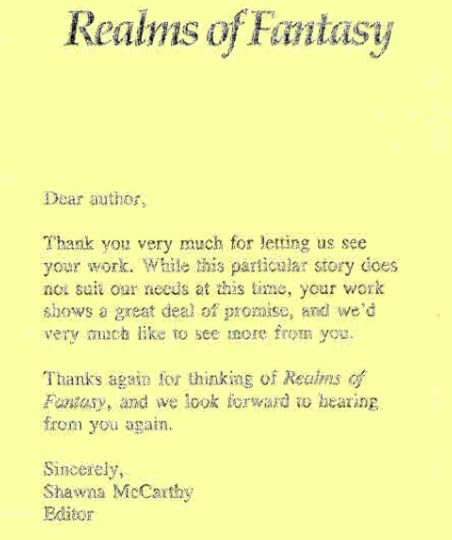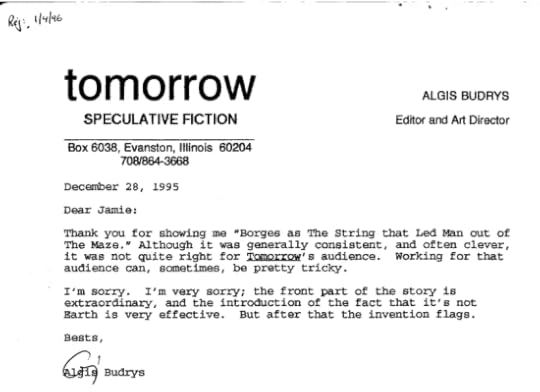I Once Received a Personal Rejection From Algis Budrys
An aspiring writer typically divides their rejection letters into two categories: (1) form letter rejections, those rejections that are completely impersonal, but don’t really provide any feedback on the quality of the story, other than the fact that it has been rejected from the market where it was sent; and (2) the elusive “personal” rejection, in which the writer receives some kind of personal note from the editor. In the latter case, the story is still rejected, but there is a general notion that personal rejections are a step up from form letter rejections.
It occurs to me that there may be aspiring writers who read this blog, and that a subset of those writers may not yet have seen a rejection letter. Perhaps this is because you have just sent out your very first submission. Or perhaps because you haven’t quite worked up the nerve to send out a story. So, for those who are curious, I thought I’d provide an example of a form rejection letter and a personal rejection letter so that other may see what they look like.
First the form letter:
This one is clearly a form letter, despite the encouraging line about showing promise. Many markets often have a couple of different form letters on hand for this purpose. I went to my records to find out when I received this rejection and what it was for–and would you believe that I don’t have a record of ever submitting anything to Realms of Fantasy. I must have submitted something, else how would I have gotten the rejection? Apparently, I forgot to record it.
Next, is an example of a personal rejection:
This is the second “personal” rejection I ever received. (The first was from Kris Rusch at F&SF and I received it sometime in early 1995, but the letter itself has vanished. I no longer have it.) And this personal rejection is by none other than Algis Budrys, whose novel Rogue Moon I really admired when I first read it. (The novel is about the side-effects of matter transmission and is a literary grandfather to novels like Robert J. Sawyer’s Mindscan.)
You’ll note the first paragraph is standard form letter. It’s the second paragraph where the “personal” bit comes in. I can still remember the excitement I had when I saw that Budry’s thought the opening of my story was “extraordinary.” Keep in mind that I received this letter after I’d been writing and submitting for only about 2 years. Still, the story never sold anywhere.
Since that time, I’ve received dozens of “personal” rejections and scores of form letter rejections. Most of the personal rejections are very similar to what you see above, a short paragraph of what worked or what didn’t. As I got closer to hitting Analog, however, the personal rejections from Stan Schmidt became page-long letters. After about three of those letters from Stan, I sold him a story.
I don’t receive many rejection letters these days. Instead, rejections, when they come, typically arrive by email.
Receiving a rejection never really bothered me. There were times when I was momentarily disappointed, because I really thought I’d pulled something off. But I understood from the start that (1) they are part of the process of becoming a writer, and no one but a genius goes without rejection; and (2) they could motivate me to do better next time.
Besides, receiving a rejection in the mail made me feel like a real writer from the start and it was that feeling, that desire to want to be a writer that kept me going through 14 years of rejection slips before I sold my first story.






